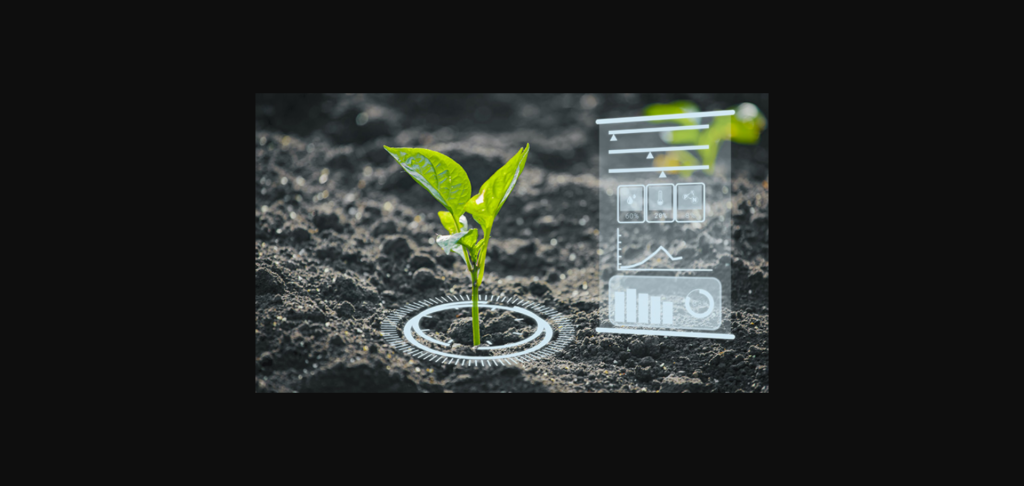Introduction
The growth of the global population, which is projected to reach 10 billion by 2050, is placing significant pressure on the agricultural sector to increase crop production and maximize yields. To address looming food shortages, two potential approaches have emerged: expanding land use and adopting large-scale farming, or embracing innovative practices and leveraging technological advancements to enhance productivity on existing farmland.

Benefits of AI in agriculture
Until recently, using the words AI and agriculture in the same sentence may have seemed like a strange combination. After all, agriculture has been the backbone of human civilization for millennia, providing sustenance as well as contributing to economic development, while even the most primitive AI only emerged several decades ago. Nevertheless, innovative ideas are being introduced in every industry, and agriculture is no exception. In recent years, the world has witnessed rapid advancements in agricultural technology, revolutionizing farming practices.
Applications of artificial intelligence in agriculture
The AI in agriculture market is expected to grow from USD 1.7 billion in 2023 to USD 4.7 billion by 2028, according to MarketsandMarkets.
Traditional farming involves various manual processes. Implementing AI models can have many advantages in this respect. By complementing already adopted technologies, an intelligent agriculture system can facilitate many tasks. AI can collect and process big data while determining and initiating the best course of action. Here are some common use cases for AI in agriculture

Detecting leaks or damage to irrigation systems
AI plays a crucial role in detecting leaks in irrigation systems. By analyzing data, algorithms can identify patterns and anomalies that indicate potential leaks. Machine learning (ML) models can be trained to recognize specific signatures of leaks, such as changes in water flow or pressure. Real-time monitoring and analysis enable early detection, preventing water waste together with potential crop damage.
AI also incorporates weather data alongside crop water requirements to identify areas with excessive water usage. By automating leak detection and providing alerts, AI technology enhances water efficiency helping farmers conserve resources.
Detecting disease and pests

As well as detecting soil quality and crop growth, computer vision can detect the presence of pests or diseases. This works by using AI in agriculture projects to scan images to find mold, rot, insects, or other threats to crop health. In conjunction with alert systems, this helps farmers to act quickly in order to exterminate pests or isolate crops to prevent the spread of disease.
AI technology in agriculture has been used to detect apple black rot with an accuracy of over 90%. It can also identify insects like flies, bees, moths, etc., with the same degree of accuracy. However, researchers first needed to collect images of these insects to have the necessary size of the training data set to train the algorithm with.
Role of AI in the agriculture information management cycle
Risk management
Predictive analytics reduces errors in farming processes.
Plant breeding
AI utilized plant growth data to further advise on crops that are more resilient to extreme weather, disease or harmful pests.
Soil and crop health analysis
AI algorithms can analyze the chemical composition of soil samples to determine which nutrients may be lacking. AI can also identify or even predict crop diseases.
Crop feeding
AI in irrigation is useful for identifying optimal patterns and nutrient application times, while predicting the optimal mix of agronomic products.
Harvesting
AI is useful for enhancing crop yields and can even predict the best time to harvest crops.
A unified farm management system
For another AI project, we worked with a leading farm management software provider to revamp their record-keeping software. Our engineers stabilized the existing software by eliminating errors, then enriched it with a range of features and services. In addition, we helped develop a comprehensive farm management platform.
This platform included tools for crop rotation, weather analysis, disease management, satellite imagery analysis, drill/soil mapping together with operations planning, resulting in a solution that empowers farmers to monitor and optimize their operations, enhance yields hence make informed decisions for sustainable farming. Although the cost of implementing AI can vary widely depending on the scope of the project, it is likely to turn into a profitable investment.
